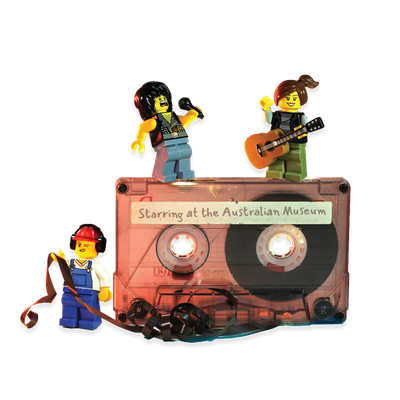Your search returned 109 results
By Page Type
By Tag
- All
- fish (966)
- blog (698)
- fishes of sydney harbour (400)
- First Nations (293)
- Blog (236)
- AMRI (169)
- archives (165)
- Aboriginal and Torres Strait Islander (135)
- Eureka Prizes (131)
- insect (126)
- Ichthyology (125)
- geoscience (109)
- minerals (102)
- climate change (98)
- podcast (94)
- Fish (91)
- Anthropology (89)
- International collections (80)
- Minerals Gallery (78)
- wildlife of sydney (78)
- Labridae (77)
- frog (73)
- gemstone (70)
- history (63)
- photography (63)
- staff (61)
- Mollusca (60)
- gem (59)
- Birds (58)
- education (57)
- Gems (56)
- Indonesia (56)
- AMplify (54)
- shark (54)
- people (53)
- exhibition (51)
- earth sciences (50)
- past exhibitions (50)
- Gobiidae (48)
- Pomacentridae (45)
- sustainability (45)
- Serranidae (44)
- science (43)
- lifelong learning (42)
- Earth and Environmental Science (41)
- Syngnathidae (41)
- Ancient Egypt (40)
- Bali (40)
- bird (40)
- dangerous australians (40)
-
Sedimentary structures
https://australian.museum/learn/minerals/shaping-earth/sedimentary-structures/Sedimentary structures can be of either physical (e.g. wave action) or biological (e.g. disruption of sediments by animals) origin.
-
Soils
https://australian.museum/learn/minerals/shaping-earth/soils/Soils are made up of three layers and are thickest where they are older and in warm and wet environments.
-
Volcanic rocks
https://australian.museum/learn/minerals/shaping-earth/volcanic-rocks/Volcanic rocks are divided into three main types: basaltic, volcaniclastic and pyroclastic.
-
Crystallography
https://australian.museum/learn/minerals/what-are-minerals/crystallography/Minerals can be identified by the shape of their crystals: called crystallography. External crystallography measures the outside properties of crystals such as length of crystal surfaces and the angles between these surfaces.
-
Tektites
https://australian.museum/learn/minerals/shaping-earth/tektites/Tektites are small, pebble-like glassy objects of Earth material that have been melted by meteorite impact, splashed up into our atmosphere, and fallen to Earth again under gravity.
-
Meteors and Meteorites
https://australian.museum/learn/minerals/shaping-earth/meteors-and-meteorites/Solid pieces of extraterrestrial debris (meteoroids) can stray from their orbits in outer space and be captured by Earth's gravity.
-
Classification of sedimentary rocks
https://australian.museum/learn/minerals/shaping-earth/classification-of-sedimentary-rocks/Sedimentary rocks are classified according to the predominant grain size present, as well as by their mineral content.
-
Azurite on Cerussite
https://australian.museum/learn/minerals/mineral-factsheets/azurite-on-cerussite/This beautiful specimen contains the largest Broken Hill azurite crystal in our collection.
-
Molybdenite on quartz
https://australian.museum/learn/minerals/mineral-factsheets/molybdenite-on-quartz/With its large, curved, silvery, flexible and metallic crystal flakes scattered over quartz crystals in an aesthetic arrangement, this is the best molybdenite (molybdenum sulphide) specimen of its type in the world.
-
Azurite with Cerussite
https://australian.museum/learn/minerals/mineral-factsheets/azurite-with-cerussite/This magnificent plate of dark blue azurite (copper hydroxy-carbonate) crystals from the oxidised zone of the Broken Hill orebody was acquired by Albert Chapman from a Broken Hill mine ‘trucker’ who ‘collected’ it in the 1950s.
-
Find out more
Tails from the Coasts
Special exhibition
On now![]()
-
Find out more
Burra
Permanent kids learning space
10am - 4.30pm![]()
-
Discover more
RELICS
Special Exhibition
Opens 16 August 2025![]()
-
Discover more
Minerals
Permanent exhibition
Open daily![]()





